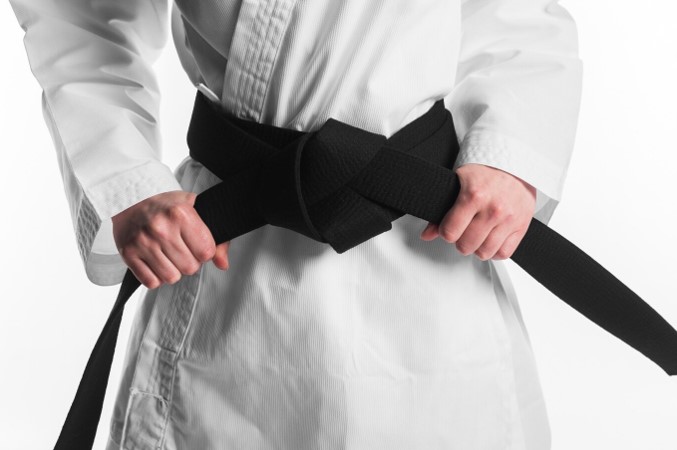The Belt System in Martial Arts: What Do the Colors Mean?

The belt system in martial arts is one of the most recognizable aspects of training, symbolizing the progression of skill, knowledge, and personal growth. Whether you’re training locally or in martial arts Tampa, the specific colors and rankings can vary depending on the martial art, but the belt system serves a universal purpose: to mark the journey from beginner to expert. It’s a visual representation of a practitioner’s dedication and hard work, but it’s also a way to distinguish levels of proficiency within a school or style.
In this article, we’ll explore the history of the belt system, the significance of various belt colors, and how different martial arts interpret the ranking system.
The Origins of the Belt System
The belt system, as we recognize it today, originated with the Japanese martial art of Judo in the late 19th century. Judo’s founder, Jigoro Kano, developed the system to encourage students to progress through structured levels of proficiency. The original ranking system used two colors: white for beginners and black for advanced students, which later expanded into a more intricate system of colored belts.
Kano’s belt system was soon adopted by other martial arts, including Karate, Jiu-Jitsu, Taekwondo, and various forms of Kung Fu. Over time, additional colors were added to indicate intermediate stages of progression, giving students a clear path from novice to master.
While the belt colors may vary slightly depending on the specific martial art or the school, most systems follow a similar hierarchy, with students starting at white and working their way through different colors until they achieve the coveted black belt, symbolizing mastery.
The Common Belt Colors and Their Meanings
Each martial art has its own unique belt system, but many share similar color progressions. The colors are not just random; they often carry deep symbolism related to the growth and development of the practitioner. Below is a breakdown of some common belt colors and their meanings across various martial arts disciplines.
1. White Belt

The white belt is universally recognized as the starting point for martial artists. White symbolizes purity and innocence, representing the student’s lack of knowledge and experience. At this stage, the beginner is a “blank slate,” ready to absorb new information, techniques, and discipline.
- Meaning: New beginning, innocence, potential
- Stage: Beginner
- Skills Learned: Basic stances, footwork, and fundamental techniques. The focus is on learning the basic principles of the martial art and developing the body’s coordination.
2. Yellow Belt

The yellow belt typically represents the first step beyond the beginner phase. In many cultures, yellow is associated with the sun, symbolizing new beginnings, growth, and enlightenment. The student has started to shed their “white” innocence and is now beginning to understand the foundational techniques of the martial art.
- Meaning: New light, awareness, growth
- Stage: Novice
- Skills Learned: More advanced basic techniques, including combinations and drills that build on the foundation learned at the white belt stage. Students may also begin practicing forms (katas) and basic sparring techniques.
3. Orange Belt

The orange belt is typically seen as a continuation of the growth that started at yellow. The color orange is often associated with energy, enthusiasm, and the dawn of deeper knowledge. At this stage, students begin to build confidence in their abilities, while still refining fundamental skills.
- Meaning: Strengthening foundation, enthusiasm, energy
- Stage: Early Intermediate
- Skills Learned: Increased technical complexity, students may learn more advanced strikes, grappling techniques, or self-defense applications. Focus on endurance and stamina also begins to intensify.
4. Green Belt

Green is the color of growth, representing the stage at which the student begins to truly flourish. Much like a plant taking root, the student at this level is solidifying their knowledge of basic techniques and is ready to learn more complex skills. The green belt stage is often seen as a turning point, where the student begins to demonstrate a higher level of understanding and control over their body.
- Meaning: Growth, development, deepening roots
- Stage: Intermediate
- Skills Learned: More advanced forms and techniques, deeper focus on sparring, strategy, and conditioning. Students are expected to demonstrate increased fluidity, precision, and confidence in their movements.
5. Blue Belt

The blue belt often symbolizes the sky, suggesting that the student’s knowledge and abilities are expanding and reaching new heights. At this stage, the martial artist begins to develop more mastery over intermediate techniques and is capable of applying their skills in various combat or sparring scenarios.
- Meaning: Expansion, broadening horizons, depth of skill
- Stage: Advanced Intermediate
- Skills Learned: The focus shifts toward perfecting techniques, developing a personalized style, and mastering more difficult forms or sparring techniques. Students at this level are expected to show fluidity, precision, and a deep understanding of strategy.
6. Purple Belt
Purple is a color associated with ambition and transformation. By the time a student reaches the purple belt level, they are no longer just an intermediate practitioner but are on the verge of advanced proficiency. The purple belt stage is often seen as a time of refinement, where students begin to take ownership of their martial arts journey and focus on areas of personal improvement.
- Meaning: Ambition, transformation, refinement
- Stage: Advanced
- Skills Learned: Mastery of complex techniques, forms, and sparring strategies. Purple belts often focus on honing their mental discipline and developing leadership skills, as they are sometimes expected to assist with teaching lower-ranked students.
7. Brown Belt

Brown is a color that signifies maturity and the ripening of skills. The brown belt stage is one of the last phases before achieving black belt status, symbolizing the student’s readiness for mastery. At this level, the martial artist demonstrates significant technical ability, discipline, and an in-depth understanding of their art.
- Meaning: Maturity, preparedness, readiness for mastery
- Stage: Expert-in-training
- Skills Learned: Refinement of advanced techniques, sparring strategies, and self-defense skills. Students at this level are expected to demonstrate not only physical prowess but also mental and emotional discipline. They often take on leadership roles, assisting in teaching and mentoring lower-ranked students.
8. Black Belt

The black belt is the pinnacle of the martial arts journey and represents mastery of the art. However, many martial arts systems emphasize that earning a black belt does not mean the end of learning. Instead, it marks a new beginning—the practitioner now has a solid foundation of techniques and knowledge, but the journey toward true mastery is lifelong.
- Meaning: Mastery, new beginnings, responsibility
- Stage: Expert/Master
- Skills Learned: The black belt signifies the ability to demonstrate complete mastery of all techniques, forms, and strategies. Black belts are also expected to embody the spirit of their martial art, acting as role models and often taking on teaching or mentoring roles within their school.
Variations in Belt Systems Across Different Martial Arts

While many martial arts share similar color schemes and meanings, there are variations across different disciplines. Let’s take a look at how some martial arts interpret the belt system.
1. Karate
Karate follows the traditional belt system, with the progression typically moving from white to yellow, orange, green, blue, brown, and finally black. However, some Karate styles, like Shotokan, include additional belts such as purple and red as part of their ranking system. The black belt is often divided into multiple dan levels, with each dan representing a deeper level of expertise.
2. Brazilian Jiu-Jitsu (BJJ)
In Brazilian Jiu-Jitsu, the belt system is more condensed, especially for adults. BJJ usually has five primary belts: white, blue, purple, brown, and black. Unlike many other martial arts, BJJ promotions are based heavily on sparring performance, with progress taking years of dedication and practical experience. Each belt in BJJ is a significant achievement, and it can take up to 10 years or more to reach black belt.
3. Taekwondo
Taekwondo, particularly in the World Taekwondo Federation (WTF) system, uses a wider variety of belts, with up to 10 colored belts leading up to the black belt. After reaching black belt, practitioners continue progressing through different dan levels. The belt progression is closely tied to a combination of technical ability, competition success, and knowledge of poomsae (forms).
4. Judo
Judo has a relatively straightforward belt system, progressing from white to black with fewer colors in between. However, like many Japanese martial arts, Judo uses a dan ranking system to signify expertise beyond the black belt level.
The Philosophical Meaning of Belt Progression

Beyond the physical skills acquired at each belt level, the belt system also holds deeper philosophical significance. Martial arts are often seen as a metaphor for life—a continuous journey of learning, growth, and self-improvement. The progression through the belts reflects the student’s inner development: their ability to overcome challenges, their discipline in practice, and their commitment to personal growth.
Achieving higher belt ranks is not just about mastering techniques; it’s about cultivating qualities such as patience, humility, perseverance, and respect. Each belt represents a stage in the practitioner’s personal evolution, both as a martial artist and as an individual.
Conclusion:
The belt system in martial arts is more than just a way to track progress; it’s a reflection of the practitioner’s journey toward mastery, both physically and mentally. The colors symbolize different stages of personal growth, discipline, and skill development as martial artists advance from beginner to expert.





